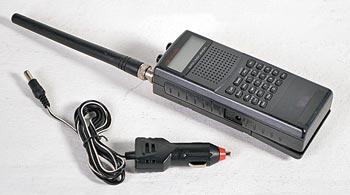By Jeff Yago, P.E., CEM
More and more people are starting to see the advantage of having a bug-out bag for each member of their family. Normally these bags are kept in a closet near the front door with everyone instructed to grab theirs if forced to evacuate due to an approaching forest fire, tornado, chemical spill, or other disaster. Most preppers will also keep an additional bug-out bag in each car or truck in case disaster strikes while they are away at work or school.
There are numerous articles and books describing what each bug-out bag should contain so I will not repeat that advice here. I will point out, however, that a bug-out bag is not a camping backpack designed to hold a tent and a week’s supply of food. The main purpose of any bug-out bag is to contain just enough emergency supplies and equipment to evacuate from where you are to a safer location when disaster hits. A bug-out bag for someone living or working in a city might include a fold-up dust mask, loud whistle, Bic lighter, thermal rain sheet, and universal tool; while a camping backpack may not include any of these emergency items.
For example, a city street map, state highway map, compass, and GPS device would be indispensable when trying to escape a disaster area, but not if you were heading out to a favorite campground. As for food, a bug-out bag will typically have a few high-energy bars, some beef jerky, and bottled water to hold you over if you have to walk 20 miles when all normal vehicle travel has stopped. However, a camping backpack would have a multiple-day supply of freeze-dried foods, fold-up cooking equipment, and eating utensils.
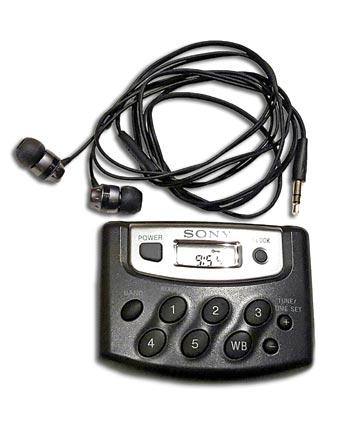
Most weekend campers enjoy getting away from the noise of city life and do not want radios, cell phones, and electronic devices. However, these electronic devices could save your life by receiving weather alerts, providing travel directions, and communicating with relatives during an emergency evacuation. In other words, traditional campers do not normally require power to charge electronic devices, but this ability is mandatory for a bug-out bag. In addition, while most of us rely on our cell phones for calls, text messaging, surfing the Internet, and even streaming live radio and Internet news programs, a cell phone can fail or be out of range. Don’t rely on a single device for all your emergency evacuation and communication needs.
In addition to your cell phone, you will want a compact AM/FM radio, preferably having an earpiece instead of a larger speaker. Without a speaker these radios can be made very small, lightweight, and will operate far longer on a small set of rechargeable “AAA” or “AA” batteries. While it’s doubtful you will normally keep your iPad in your bug-out bag, grabbing your battery-powered computer along with your bug-out bag as you head for the door will be extremely useful, especially if it includes both wireless Bluetooth and cellular Internet access.
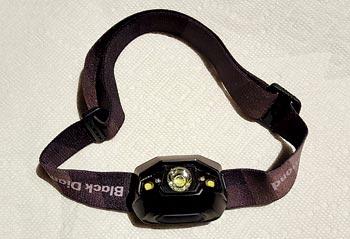
Most campers typically pack a large flashlight and lantern to illuminate a tent, but a small LED light with headband would be far more practical in a bug-out bag, especially if you need your hands free while hiking. Finally, most car GPS devices have a “walking mode” which provides block-by-block city and mountain trail hiking directions when not in a vehicle. While all of these electronic devices are perfect additions to any bug-out bag, they still have limited run time on their internal batteries. This means having a way to keep them charged is mandatory, especially if your evacuation requires multiple days of travel.
The first way to keep these portable devices charged can be the 12-volt DC dashboard outlet in every car and truck, if available (and you are not on foot). You will want a charger for each of these devices that fits this 12-volt DC vehicle outlet. Since small LED flashlights, digital cameras, and AM/FM radios are normally powered by multiple AAA or AA batteries, you will need a multi-battery charger that can charge four batteries at the same time. Of course, you will need to replace any disposable batteries in each device with new rechargeable batteries, and you should also have a spare set of batteries that can be charging at the same time the other set is being used.
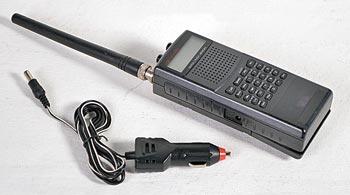
Another must-have item, thanks to recent advances in battery technology, is the rechargeable battery pack. The smallest models are typically used to give a cell phone several additional hours of run time. However, there are now larger models available that can actually start a car, yet are not much larger than a paperback novel. These typically have a USB charging port which will fit almost any cell phone or iPad charging cable and will provide many hours of additional run time.
Last, but not least, is a fold-up solar charger. These are typically sold in 5, 7, 10, 12, and 25-watt sizes, with the smallest ideal to recharge a cell phone. The large fold-up solar modules can power a laptop computer or emergency radio transmitter.
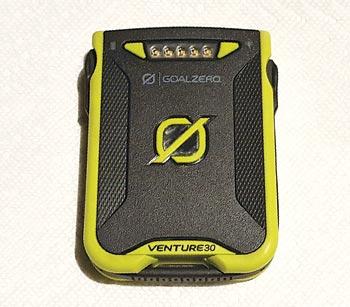
Most fold-out solar modules designed to charge a cell phone, laptop, or other electronic device are normally stationary and need to face the sun during the charging process. When you are stopped for any length of time, the modules can be removed from the bug-out bag, unfolded, and placed on any surface facing the sun.
However, in addition to a smaller solar charger, I recommend adding one of the fold-out solar modules designed to clip to the outside of a backpack or bug-out bag. Most models include a lightweight, but high-capacity, battery pack allowing this battery to be charged the entire time you are on foot, assuming it’s not at night.
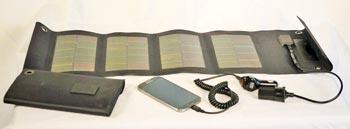
Weight is a very important consideration in deciding what to include and what to leave behind for any backpack or bug-out bag. All of the powered devices I have described are lightweight and fold up to very compact sizes and offer enough flexibility to fit into tight spaces.
While less important for a normal camping trip, having communication and mapping devices in a bug-out bag and multiple ways to keep them charged could save your life someday. Since you may need to utilize several different chargers and charging cables, it’s a good idea to verify you have the charging cables and adapters to connect each to multiple sources of power. It’s also helpful to standardize on the same size battery, with the larger AA being your best choice when selecting flashlights, radios, walkie-talkies, and other devices with removable batteries.
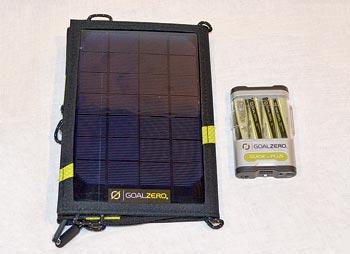
For example, you can find some brands of LED flashlights and portable radios that require the small AAA flashlight batteries, and others using the much longer-life AA size batteries. If all of the devices you purchase use the same size battery, that is one less battery charger and charging cable to pack.
Keeping a cell phone charged is your main priority since it can provide online maps, directions, and communication, but you need a backup in case cell phone service is out or you are out of range. Also remember most mapping and turn-by-turn direction software running on a cell phone or iPad require constant updating by satellite or cell phone service as you travel from one zone to the next, and if this communication is lost, your primary source of travel information may also go down. Do not forget to pack a fold-up city, county, and state map for the areas where you will be traveling in the event of a major “get-out-of-Dodge” event.
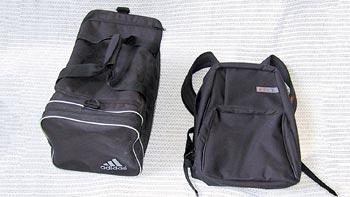
Summary
Having a bug-out bag is really important if you live or work in a large city, in which case a book bag or gym bag is a perfect solution. Either of these would appear to be carrying nothing of value and would be far less likely to be stolen or attract unneeded attention in a panicked crowd, while a large camo backpack screams, “Get your emergency supplies here!”
In addition to the small electronic devices and chargers I am recommending, each bug-out bag should be stored along with a really-good pair of walking shoes and absorbent socks. If you do need to evacuate you will be on foot since most forms of public transportation may be blocked. Work boots and tennis shoes are not designed for miles of walking over all types of terrain and should be avoided.
While I hope you never are faced with a situation where you will actually need your emergency bug-out bag, there is great peace of mind knowing it will be there silently waiting if you do. Stay safe.
[weaver_widget_area id=’articles_about_yago’ class=’text3′]


